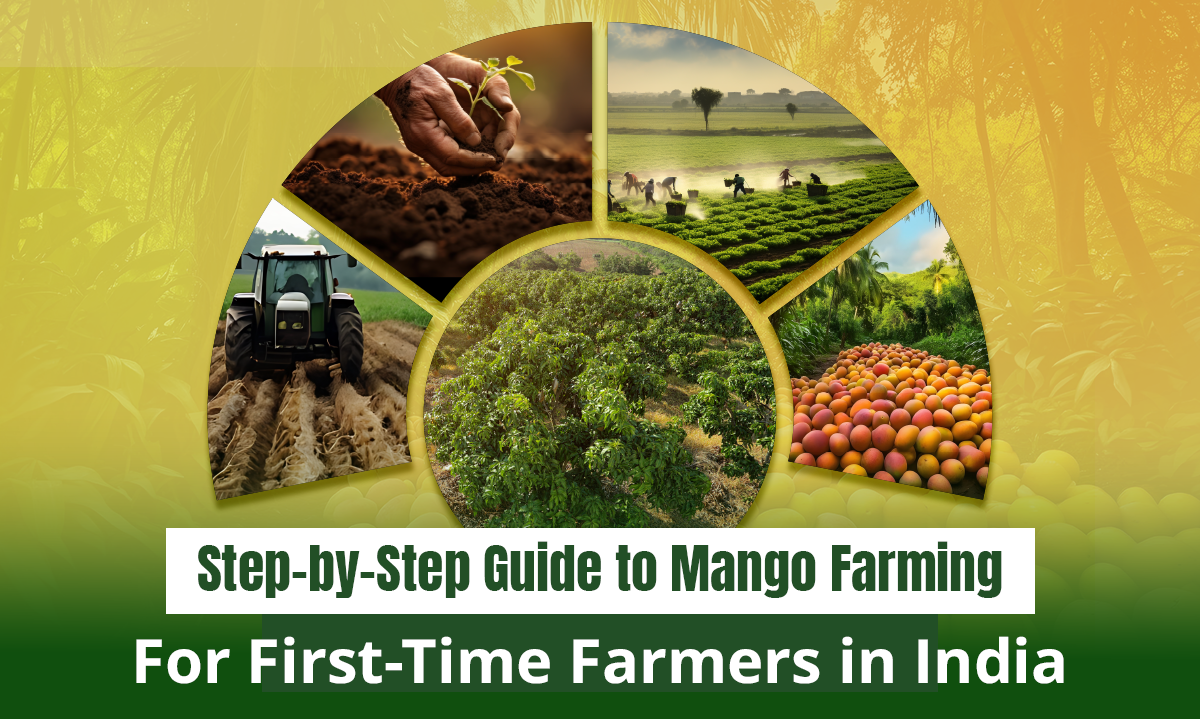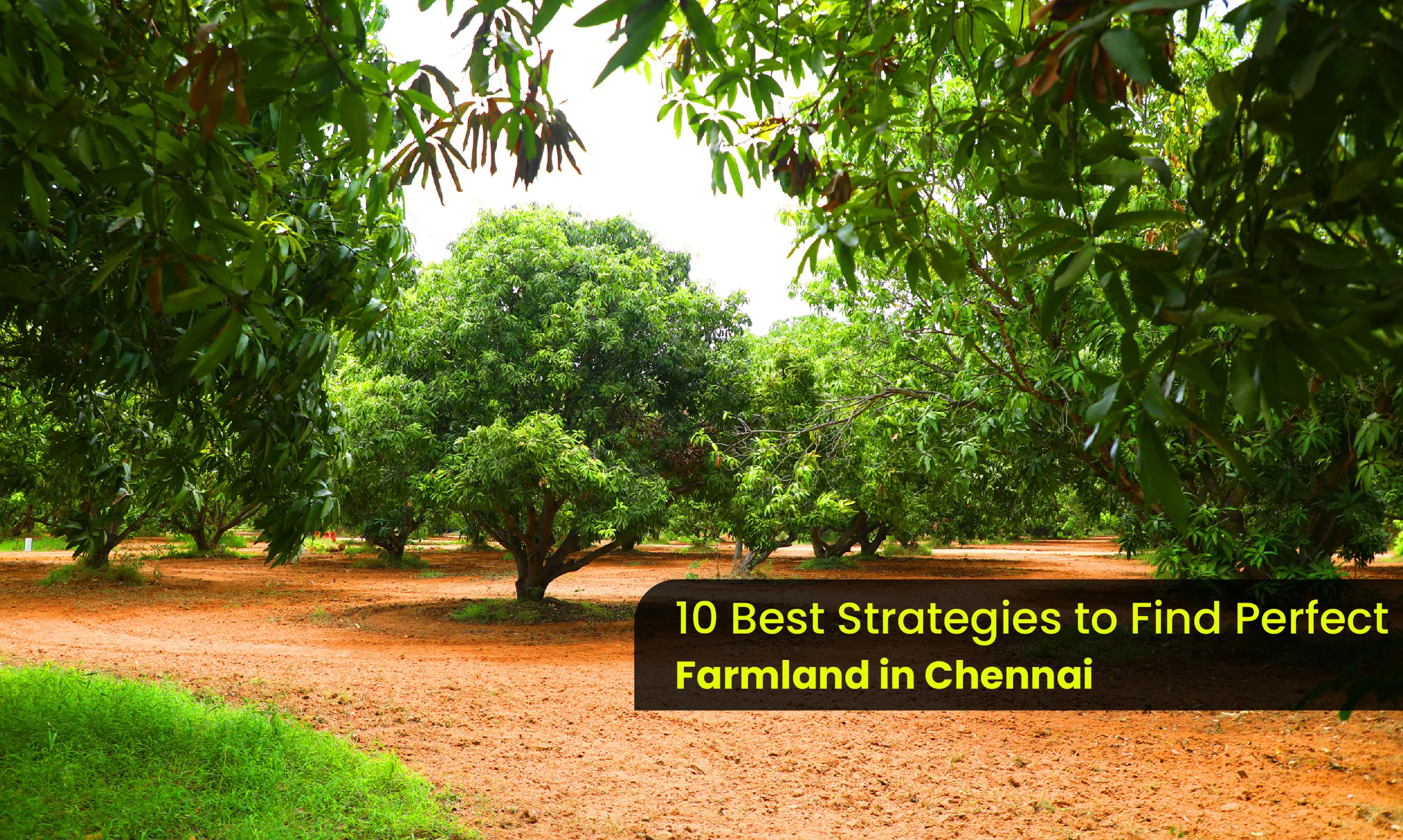A Complete guide to Mango Farming for First-Time Farmers in India

Introduction
Mango farming is a fun and profitable way to be a farmer, especially in India, where they are both a famous fruit and an important crop. But starting a fruit farm might look like a lot of work for people who have never been a farmer before. This step-by-step guide will teach you everything you need to know to start growing mangoes, from picking the right land to running the farm so that it makes money in the long run.
Learning about Mango Farming: Why It's a Good Investment
There are a lot of reasons why mango growing can be a profitable business. As the world's biggest mango producer, India always has a lot of people looking for high-quality mangoes. Popular types of mango include Alphonso, Kesar, Himsagar, and Langra. Each has its own market and growth needs. A good range of mangoes and good farm management can help you make a lot of money over time.
Options for Picking the Best Mango Farmland
Choosing the correct land for your mango farm is critical to ensuring that the trees grow well and produce a large amount of fruit. Mango trees require well-drained soil, plenty of sunlight, and enough space to grow healthy. Digging too deeply might lead to root rot, so look for sites with thick, loose soil that drains well. Mango trees thrive on soils that range from slightly acidic to neutral (pH 6-7).
Additionally, think about the weather in the area where the farm is situated. For flowering, mango trees need a warm environment with temperatures between 24°C and 30°C and a clear dry season. For dry periods, make sure the land has access to safe water sources. Maintaining a distance of at least 10–12 meters between trees is also important to avoid crowds. You can set up a successful and fruitful mango farm by carefully picking the right land for it.
Picking the Right Kind of Mangoes
The success of your mango farm depends on picking the right type of mango. Factors such as climate, soil type, and market demand should influence your selection. For their rich flavor and high market value, India's most famous types include Alphonso, Kesar, Langra, and Himsagar. Research local growing conditions to determine which varieties thrive best in your region, as some varieties require specific climates to produce optimal fruit.
When choosing types, keep your mango farm's goals in mind as well. If your goal is to sell fresh fruit, pick types like Alphonso or Langra that have great taste and shelf life. Mango varieties like Totapuri or Raspuri are great for value-added products if you intend to turn them into pulp or juice. You can increase yields, quality, and profitability on your farm by choosing the appropriate mango variety.
Preparing the Mango Farm Land
Preparing the mango farmland is a crucial first step in ensuring healthy trees and high-quality fruit production. Begin by clearing the land of any weeds, rocks, or debris to create a clean planting area. It’s important to assess the soil quality before planting, so conduct a soil test to check for nutrient levels and pH balance. Mango trees thrive in slightly acidic to neutral soils with excellent drainage, so amend the soil accordingly with organic compost or other nutrients as needed.
To ensure that water can freely reach the roots, shovel the ground to increase aeration and break up compacted dirt. To guarantee enough irrigation flow and avoid waterlogging, level the ground. Dig planting pits that are roughly two feet deep and three feet wide for each tree, being sure to space them appropriately to provide for the best possible growth and airflow. A successful mango farm is built on the foundation of properly prepared land, which guarantees the plants' robust and healthy growth.
Create Plant Mango Trees
Planting mango trees requires careful planning to ensure strong growth and optimal fruit production. First, select superior seedlings from a reputable nursery that are free of illness. Because grafted mango saplings mature more quickly and are more resistant to disease than seed-grown trees, we advise using them. Make sure the planting location has enough of sunlight, rich soil, and good drainage.
When planting, dig a pit large enough to accommodate the roots and add organic compost for soil enrichment. Space the trees at least 10—12 meters apart to allow for their natural spread and proper airflow. Water the newly planted trees regularly and apply mulch around the base to retain moisture and control weeds. With the right planting techniques, your mango farm will be off to a healthy start, leading to better yields in the future.
Fertilization and the Management of Nutrients
For mango trees to develop healthily and yield fruit of superior quality, fertilization and careful nutrient management are necessary. A balanced supply of essential nutrients, including potassium, phosphorus, and nitrogen, is necessary for mango trees. Compost, vermicompost, and farmyard manure are examples of organic fertilizers that are effective at boosting soil fertility and structure.
Micronutrients such as magnesium, boron, and zinc are also crucial for fruit development. Targeted fertilization is made possible by routine soil testing, which finds nutrient deficiencies. You can guarantee the best possible tree health, increased yields, and mangoes of superior quality from your farm by putting in place an effective fertilization schedule and effectively managing nutrients.
Trimming and cultivating Mango fruit trees
Pruning serves to maintain the shape of the tree, promotes healthy growth, and boosts fruit yield. Remove dead, damaged, or diseased branches regularly. For superior structure, train the tree to have only one stem or a strong central leader. Avoid extensive trimming since mango trees do not respond well to excessive cutting.
Pest and Disease Management
Effective pest and disease management is critical for keeping mango trees healthy and producing high-quality fruit. Common pests like aphids, fruit flies, and mealybugs can harm mangoes, while diseases like anthracnose and powdery mildew can impair yield. Regular pest and disease monitoring, as well as early discovery, help to prevent extensive harm.
Chemical consumption can be decreased by implementing integrated pest management (IPM) techniques, which include organic treatments like neem oil, natural predators, and appropriate pruning. Infections can also be avoided by keeping ideal tree spacing and ensuring proper farm sanitation. You can protect your mango farm, boost output, and guarantee premium mangoes by concentrating on proactive pest and disease management.
Harvesting mangoes
Mangoes typically start bearing fruit 3-4 years after planting, depending on the variety. Harvest mangoes when they are totally ripe yet still hard. Overripe mangoes can be damaged during handling or shipping. To avoid bruises, pluck the fruit with clean, sharp equipment and handle it carefully.
Market and Sell Mangoes
The last step in mango farming is selling your produce. Several strategies include:
To effectively market and sell mangoes, it’s essential to identify your target audience and tailor your strategies accordingly. For local markets, consider partnering with grocery stores, supermarkets, and farmer’s markets to offer fresh, high-quality mangoes. Social media platforms like Instagram and Facebook are also excellent tools for showcasing your farm’s unique mango varieties, sharing seasonal promotions, and building a loyal customer base.
Expanding beyond local sales, you can tap into wholesale opportunities by establishing connections with restaurants, juice manufacturers, and food processors. Offering value-added products such as mango pulp, jams, or dried mango can increase revenue and diversify your income streams. With a solid marketing plan, including both local and online sales channels, you can successfully market your mangoes and grow your farm’s profitability.
Conclusion
For first-time farmers in India, growing mangoes can be a very profitable and long-term business. You can make sure your mango farm is successful by choosing the right land, variety, and growing methods, as well as good water management, pest control, and fertilization. Your fruit farm can grow into a successful business that adds to India's long history of farming if you work hard, are patient, and plan.
Latest blogs
JOIN OUR COMMUNITY !
Stay connected with Getfarms! Follow us on social media for the latest updates, exclusive offers, and a glimpse into the world of farmhouse living. Join our community today




























